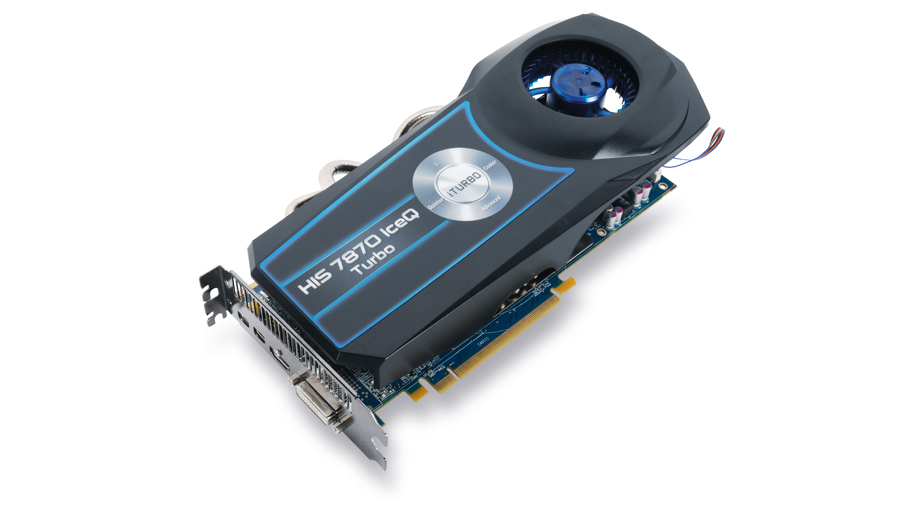TechRadar Verdict
Pros
- +
Decent cooler design for multiple cards
- +
Slight increase in stock speeds
- +
Small amount of OC headroom
Cons
- -
Not much of an overclocker
- -
Price
- -
Not much of an improvement over stock card
Why you can trust TechRadar
This latest version of the IceQ cards from HIS gave me a big, shit-eating grin when I pulled it from the chunky packaging. The massive cooler strapped onto the PCB makes it look like a graphics card from 2005, when bigger was unashamedly better.
The cooling array spreads out from the circuit board to house a large fan that's lifted away from the rest of the componentry. If space is at a premium in your build, this may not be the card for you.
The 'Black Hole' impeller HIS uses on its IceQ card is a little smarter than you might give it credit for, though. The fact that it is raised away from the PCB means it can draw in air from both sides. Therefore, if you have another PCI/PCIe card pushing up against it, the IceQ will still draw in a decent air supply.
It's not all about the chunky impeller though - there are also four big aluminium heatpipes going from the copper plate into the heatsink cooled by the Black Hole.
Stock options
Why does it need this extra-special cooling array with the cosmological nomenclature? Well, despite the GHz Edition naming, this is an overclocked version of the stock card. So GHz Edition +1, then? Actually it's more like +100MHz, as the starting clock speed for the HD 7870 IceQ is 1,100MHz. Does that make it GHz Ed +0.1?
Argh, whatever, this is an overclocked card and offers slightly speedier frame rates for the extra £30-odd HIS is asking for this version over the stock reference card.
Sadly though, all that extra goodness doesn't really translate into much speed in-game. Sure, you get a bit of extra performance, but only around 5-10 per cent at most. That's not much of a surprise, as factory-overclocked cards rarely offer much more straight out of the box.
What they do offer is a third-party cooling solution. That should allow you to either have quieter operation at full load, or crank up the clocks even further than with the original, reference design cooler the GPU first found itself strapped to. That Black Hole impeller is a quiet little device, and barely registers to the human ear, even when its GPU is weighed down with polygons.
What it doesn't seem to offer is much in the way of increased cooling. We saw only a 4°C difference in fully loaded GPU temperature compared with the reference cooling design. Compared with the "up to 25°C cooler than the reference cooler" claim on the HIS website, that's a bit of a blow. Even when the reference GPU was clocked up to match the starting point of the IceQ, the difference in chip-chilling barely registered.
We did manage to crank the clocks up a little higher than the reference card, though. The original card topped out at 1.2GHz, whereas the HIS version hit 1.25GHz - a whole 50MHz extra.
Benchmarks
DirectX 11 tessellation performance
Heaven 2.5: FPS: Higher is better
HIS HD 7870 ICEQ: 21
AMD HD 7870: 20.2
DirectX 11 gaming performance
DiRT Showdown: FPS: Higher is better
HIS HD 7870 ICEQ: 30
AMD HD 7870: 30
Cooling performance
100% GPU load: Degrees centigrade: Cooler is better
HIS HD 7870 ICEQ: 64
AMD HD 7870: 68
With the improvements AMD has made to its reference cooling design, the wisdom of spending extra cash on fancy third-party options that barely offer any extra performance is starting to seem misplaced. The IceQ might be worth it for the nostalgic aesthetics, but that's £30 I wouldn't be willing to throw away.
